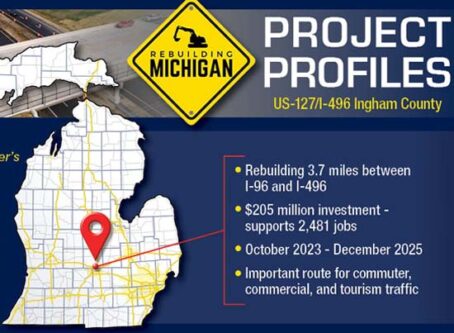OOIDA: Be wary of ‘predatory’ lease-purchase agreements
Before any driver signs a lease-purchase agreement with a motor carrier, they should have the contract examined by an expert.
That was the message from OOIDA Executive Vice President Lewie Pugh during a July 23 appearance on MadGaines Live, a digital talk show dedicated to the transportation industry. The topic of the recent episode was “Sketchy Lease Programs.” Pugh was on a panel with Adam Wingfield, managing director of Innovative Logistics; and Kristen Johnson, an attorney for Taylor & Associates and a member of the Transportation Lawyers Association. The show is hosted by Cassandra Gaines, who is an entrepreneur and transportation law expert.
Predatory programs
Pugh focused on predatory lease-purchase programs where a carrier leases a truck back to a driver for a certain amount of money and takes a percentage of the revenue for the load. In some instances, drivers have claimed that they owed the carrier money at the end of the pay period.
While the purported goal is for the driver to eventually own the truck and become a full-fledged owner-operator at the end of the lease, Pugh said the agreements rarely end that way.
“There is so much misleading stuff out there when it comes to (lease-purchase programs),” Pugh said. “All these carriers say walk-away lease, walk-away lease. I’ve still never seen a walk-away lease. The first thing we should be saying about this is if you don’t have money and you don’t have capital and you don’t have credit, you shouldn’t even be getting into the trucking business … What other industry can you go into and start a business with no money, no credit, no nothing, but ‘Hey, buddy, we’ll set you up in business.’ There is no oversight in this stuff. It’s the Wild West, unfortunately.”
The lack of oversight often leads to disastrous results for the truck driver.
“The amount of heartbreaking stories that we get here on a daily basis … If you walk away, they are coming after you,” Pugh said. “The stuff that’s in these leases, they could take your home. We see this every single day at OOIDA.”
Wingfield compared lease-purchase programs in the trucking industry to mainstream rent-to-own businesses.
“I think the whole lease-purchase thing, I’m in agreement with that there’s nothing but sketchy out there,” he said. “It reminds you of the rent-to-own industry where you can buy a TV for like $80 a week and you pay for it like 160 weeks. You get to week 100 and can’t make a payment, guess what they do? They take the TV, pretty it up and put it on the wall and rent it for another 160 weeks.”
Acknowledging that the word “lease” is often overused in the industry, Johnson said what’s in the agreement is more important than how it is labeled.
“I don’t care what the title is at the top of the document,” Johnson said. “I care about what the parties agreed to in that document. What is the benefit each party is receiving and what are they giving in exchange for that? If at the end of the day, you’re not receiving a benefit then you shouldn’t be striking that deal.”
Pugh used the platform to plug OOIDA’s Truck to Success program, which is a three-day course designed to educate drivers on whether or not becoming an owner-operator is the correct choice for them.
OOIDA’s next Truck to Success is scheduled for Oct. 26-28 in Blue Springs, Mo. There also is a virtual option for those who can’t attend in person.
In addition, Pugh urged drivers to call OOIDA and talk to an expert before signing a lease.
“If anybody out there is thinking about doing this, please call OOIDA and send us your contract and let us look at it,” Pugh said. “We will tell you about everything in there – the good, the bad, and the ugly.”
Under-21 drivers
Although the show topic was about lease programs, the panel spent several minutes discussing some efforts in the industry to lower the minimum interstate driving age from 21 to 18. Those who claim there is a driver shortage often tout teen drivers as the solution.
Pugh said there is not a driver shortage and that the statistics show that older drivers have fewer crashes.
“There is no driver shortage,” he said. “There has never been a driver shortage. There’s a huge driver pay shortage and a driver retention problem.
“I spent my life on the road for 25 years. It’s a very dangerous place to be. It takes a lot of maturity and a lot of ability. Unfortunately, for years and years drivers have not been paid correctly or treated correctly for the amount of professionalism and skill that they have to have.”
Wingfield agreed that long-haul trucking requires a certain level of maturity.
“When I was 18 years old, I had the skill to drive a truck … but I didn’t have the maturity,” he said. “I don’t think putting someone at age 18 behind the wheel is going to solve the problem.”
Gaines mentioned the common argument that 18-year-olds can join the military.
Pugh, who joined the military at age 18, said there is constant supervision in the military.
“They tell you when to eat and when to sleep,” Pugh said.
In the long-haul trucking industry, however, teenagers could be on their own thousands of miles away from home.
“You take an 18-year-old kid from Florida who has never seen snow, never seen the mountains, and you’re going to put him in an 80,000-pound truck and send him to Colorado in December or January,” Pugh said. “What do you think is going to happen?” LL









